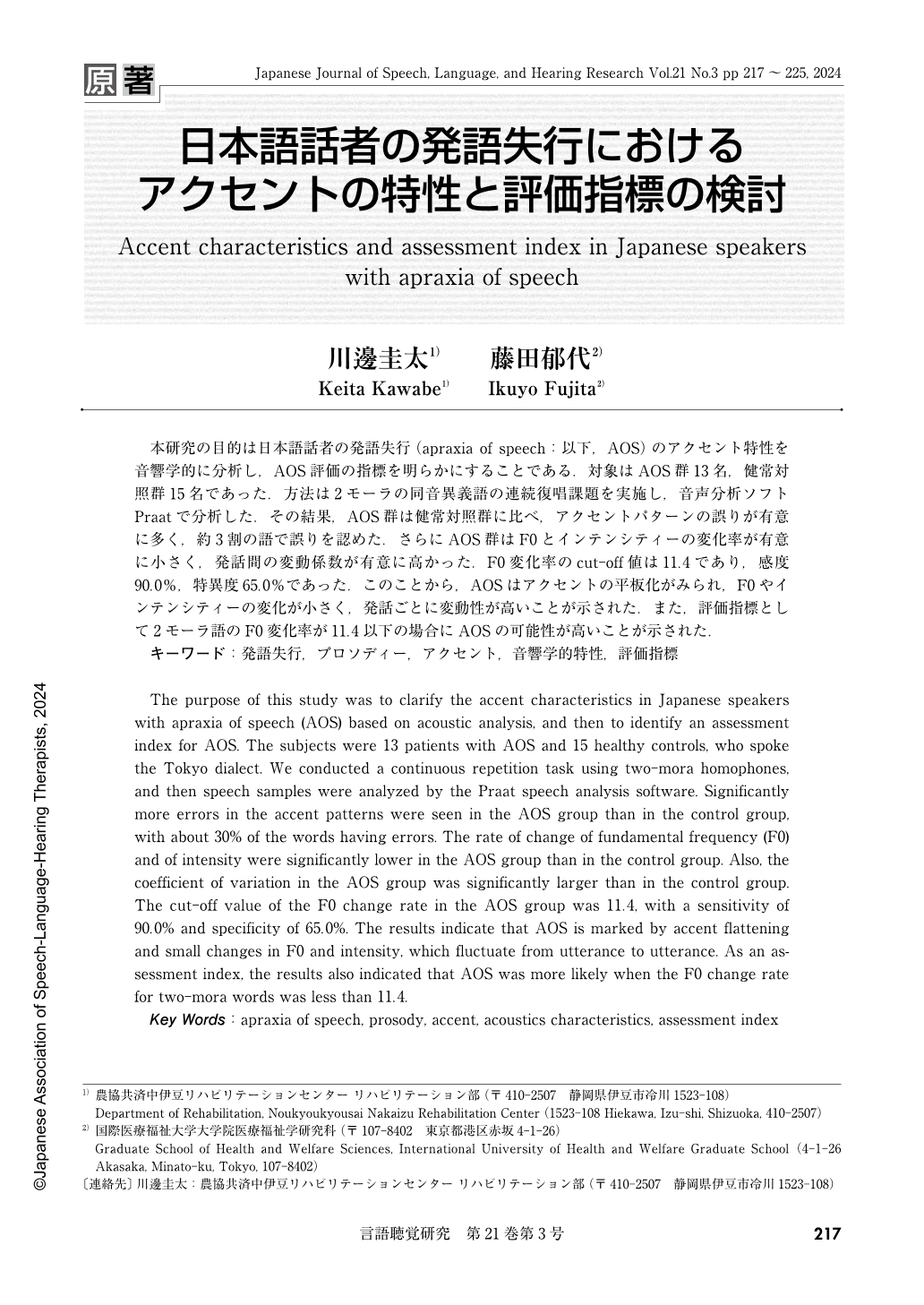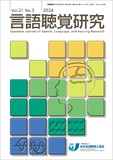Japanese
English
- 有料閲覧
- Abstract 文献概要
- 1ページ目 Look Inside
- 参考文献 Reference
本研究の目的は日本語話者の発語失行(apraxia of speech:以下,AOS)のアクセント特性を音響学的に分析し,AOS評価の指標を明らかにすることである.対象はAOS群13名,健常対照群15名であった.方法は2モーラの同音異義語の連続復唱課題を実施し,音声分析ソフトPraatで分析した.その結果,AOS群は健常対照群に比べ,アクセントパターンの誤りが有意に多く,約3割の語で誤りを認めた.さらにAOS群はF0とインテンシティーの変化率が有意に小さく,発話間の変動係数が有意に高かった.F0変化率のcut-off値は11.4であり,感度90.0%,特異度65.0%であった.このことから,AOSはアクセントの平板化がみられ,F0やインテンシティーの変化が小さく,発話ごとに変動性が高いことが示された.また,評価指標として2モーラ語のF0変化率が11.4以下の場合にAOSの可能性が高いことが示された.
The purpose of this study was to clarify the accent characteristics in Japanese speakers with apraxia of speech (AOS) based on acoustic analysis, and then to identify an assessment index for AOS. The subjects were 13 patients with AOS and 15 healthy controls, who spoke the Tokyo dialect. We conducted a continuous repetition task using two-mora homophones, and then speech samples were analyzed by the Praat speech analysis software. Significantly more errors in the accent patterns were seen in the AOS group than in the control group, with about 30% of the words having errors. The rate of change of fundamental frequency (F0) and of intensity were significantly lower in the AOS group than in the control group. Also, the coefficient of variation in the AOS group was significantly larger than in the control group. The cut-off value of the F0 change rate in the AOS group was 11.4, with a sensitivity of 90.0% and specificity of 65.0%. The results indicate that AOS is marked by accent flattening and small changes in F0 and intensity, which fluctuate from utterance to utterance. As an assessment index, the results also indicated that AOS was more likely when the F0 change rate for two-mora words was less than 11.4.

Copyright © 2024, Japanese Association of Speech-Language-Hearing Therapists. All rights reserved.


